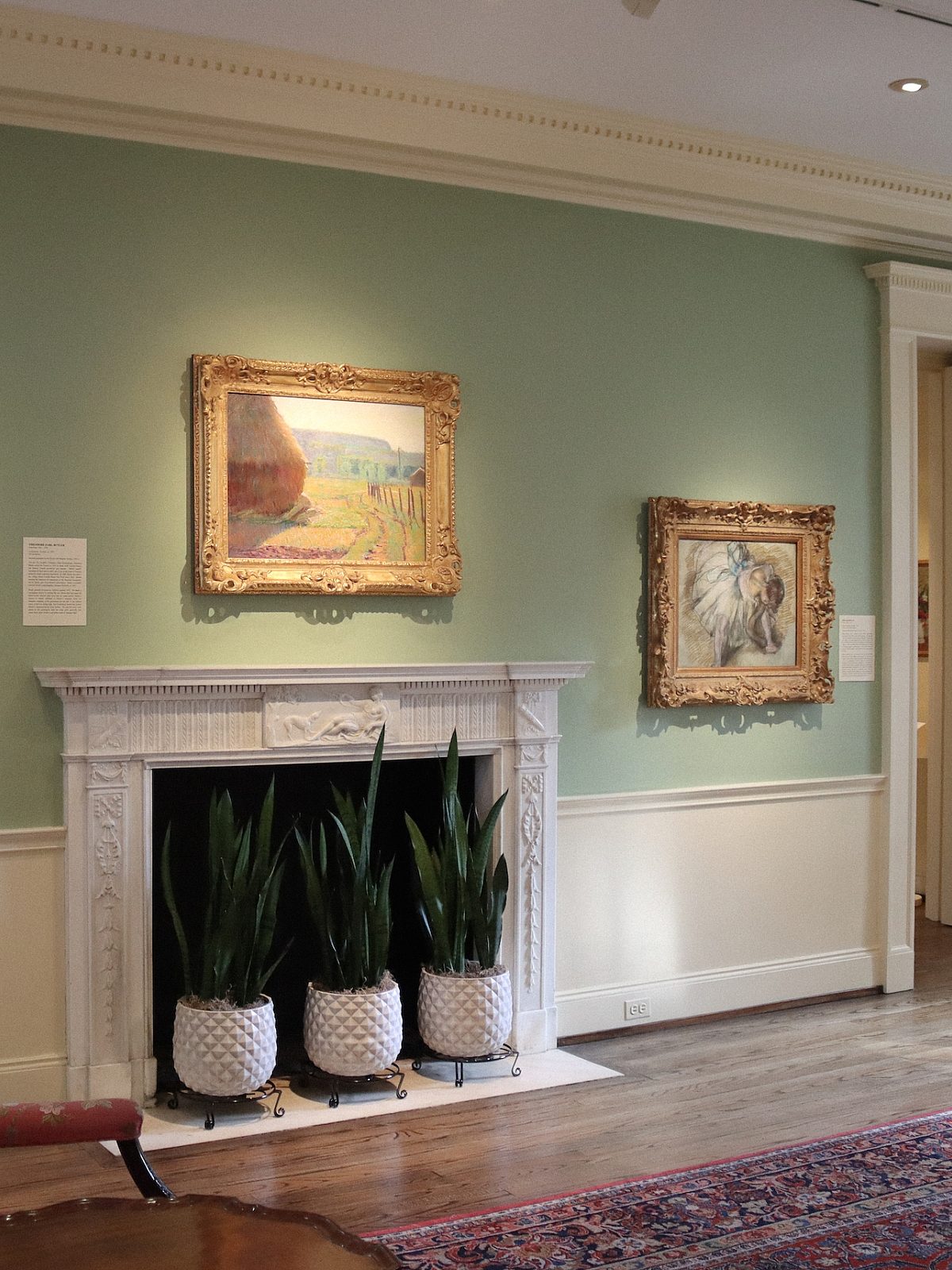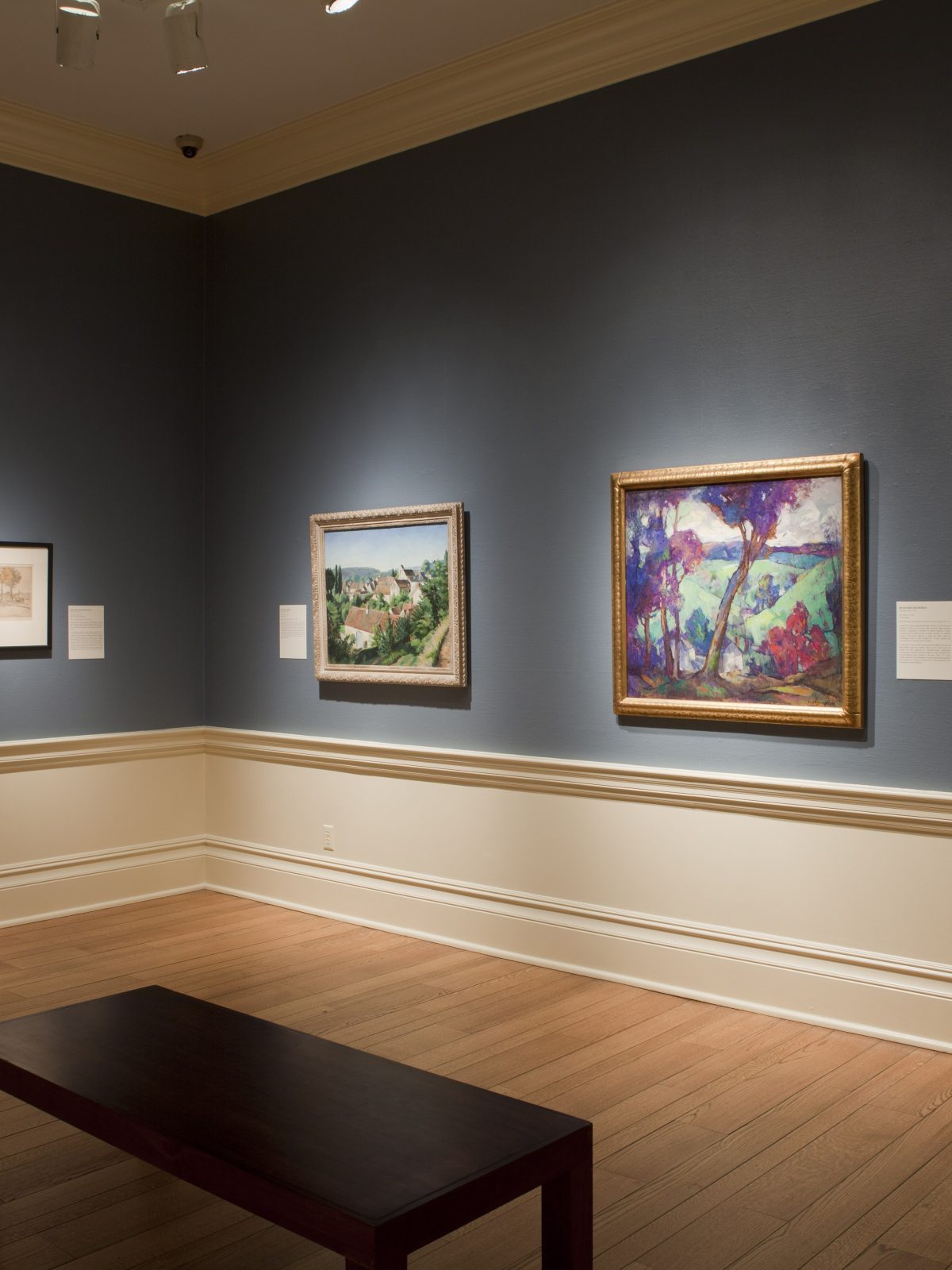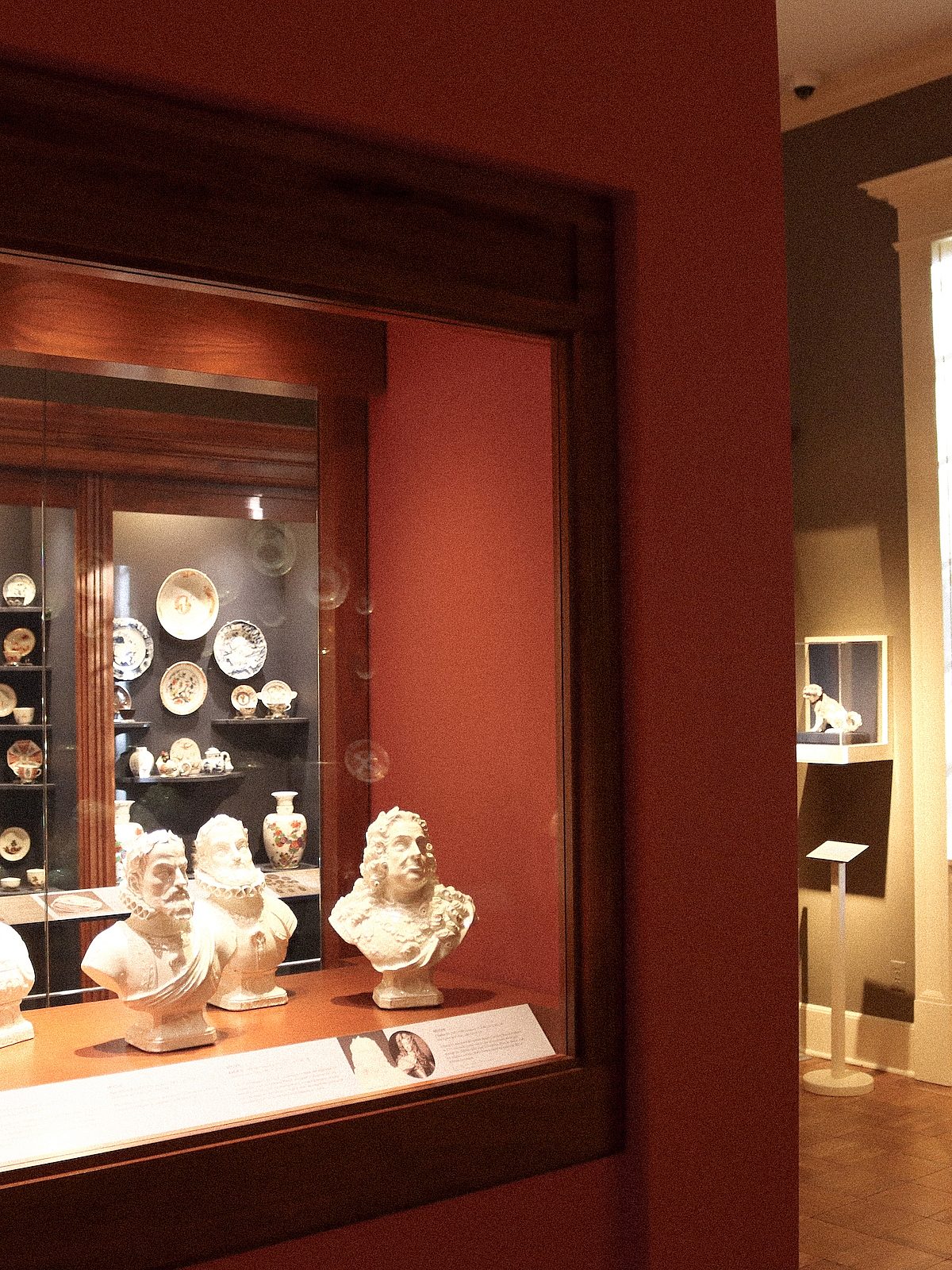The Collection
The Dixon Gallery and Gardens
Margaret and Hugo Dixon’s founding fine-art bequest consisted of twenty-seven paintings, two works on paper, and six sculptures—a small collection for any museum. But it was the quality of the works, the focus of the collection, and the joy the couple derived from assembling it that has inspired and guided collection building at the Dixon Gallery and Gardens ever since.
Today, the Dixon’s collection includes more than 2,000 objects. The focus of the Dixon’s fine-art collection is European and American art from the late nineteenth and early twentieth centuries, with a particular emphasis on French Impressionism and Post-Impressionism. The Dixon is also a leading center for the study of European ceramics through the Warda Stevens Stout Collection of Eighteenth-Century German Porcelain and the Charlotte Stout Hooker Collection of English and Continental Ceramics.
Paintings, Sculpture, Works on Paper
Works by French Impressionist and Post-Impressionist artists form the core of the Dixon’s fine art collection. One of the great revolutions in the history of art, Impressionism was focused on achieving truth in art by capturing the natural effects of light and the realities of modern life. Plein-air landscapes, contemplative still-life paintings, and dazzling scenes of dancers and fashionable men and women by some of the greatest artists of the period—including Gustave Courbet, Edgar Degas, Jean-Louis Forain, Claude Monet, Berthe Morisot, Pierre-Auguste Renoir, Georges Seurat, and others—reveal how artists challenged traditional notions on art through paintings, sculptures, and works on paper that continue to inspire creativity today.
At the same time, American artists, many of whom had traveled to France, began to embrace more contemporary subjects. Expatriate painters like Mary Cassatt, Elizabeth Nourse, Jane Peterson, John Singer Sargent, and Henry Ossawa Tanner were some of the first Americans to adopt the “new painting” of the French Impressionists, but the preference for sunlit landscapes and modern urban subjects soon spread to and across the United States, leading to diverse approaches to painting in the country’s various geographic regions.
Decades after the Impressionists first challenged the notion of what painting should be, artists including Paul Cézanne, Fernand Léger, and Henri Matisse worked to increasingly deconstruct the fundamentals of painting in the twentieth century. In doing so, they indelibly changed the course of modern art.
Decorative Art
The foundation of the Dixon’s decorative art holdings is the Warda Stevens Stout Collection of Eighteenth-Century German Porcelain. Comprising nearly 600 objects, this collection includes a remarkable survey of Meissen tableware and figures, a large assemblage of Höchst figures, and prime examples from every other major German porcelain manufactory active in the eighteenth century.
In 2008 the Dixon Gallery and Gardens received an important group of eighteenth- and nineteenth-century English ceramics from the collection of Charlotte Stout Hooker. Mrs. Hooker inherited her love of porcelain from her mother, Warda Stout, along with a small collection that would be the start of an extraordinary body of work in its own right. The Hooker Collection includes some of the rarest and most exceptional objects produced by the Chelsea, Derby, Bow, and Worcester manufactories.
Four centuries of pewter from Europe and the United States are represented in the Adler Pewter Collection at the Dixon. In 1991 Herta and Dr. Justin Adler generously donated their extensive collection of more than 300 utilitarian, commemorative, and decorative pewter objects from the seventeenth through the twentieth centuries to the Dixon. The extensive scope of the Adler Pewter Collection is a reminder of the important role pewter has played in daily life for hundreds of years. Highlights of the collection include an eighteenth-century jug in the shape of a pretzel, a nineteenth-century ice-cream mold of George Washington’s profile, and an Art Nouveau pitcher adorned with swirling, organic forms and floral motifs from the early twentieth century.


